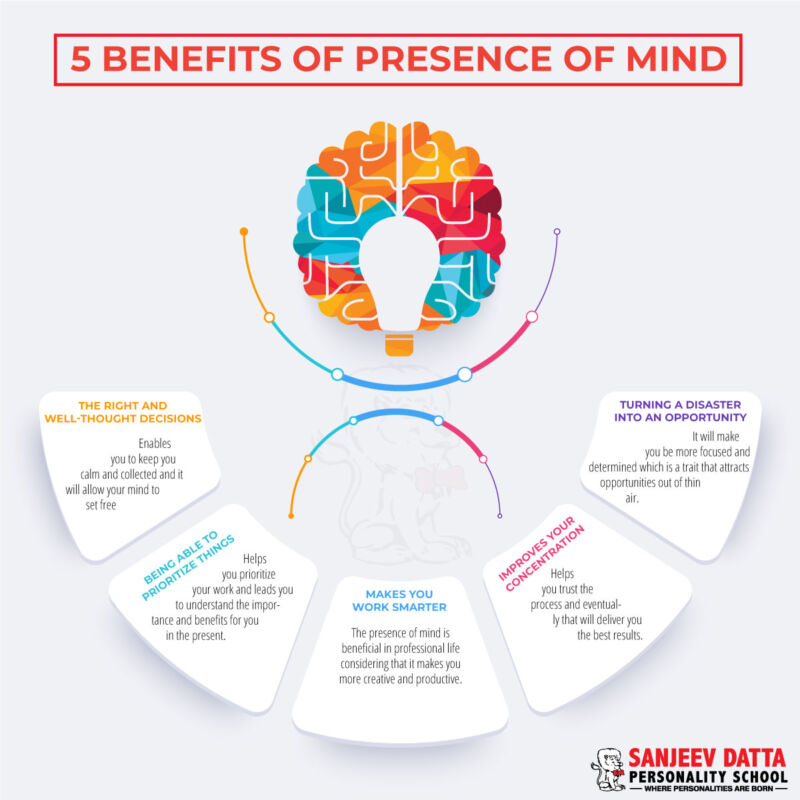In a world filled with distractions and constant demands, achieving personal growth can feel like an uphill battle. Yet, the key to transformation often lies in the small, consistent actions that build up over time. This is where habit stacking for personal growth comes into play—a powerful strategy that enables you to layer positive habits onto your daily routine, creating a ripple effect of improvement across all areas of your life. Imagine waking up each day with a blueprint of tiny, actionable behaviors that, when combined, pave the way to a more productive, fulfilled, and resilient you. Whether you’re seeking to boost your productivity, enhance your emotional well-being, or simply become more disciplined, habit stacking offers a systematic approach to making lasting changes.
In this comprehensive guide, we will explore the concept of habit stacking, examine its benefits, and provide actionable steps to help you implement this strategy into your life. Throughout the article, you’ll find interactive prompts and exercises designed to encourage reflection and motivate you to take charge of your personal development journey.

Understanding Habit Stacking
What is Habit Stacking?
Habit stacking is a concept popularized by S.J. Scott in his book Habit Stacking: 97 Small Life Changes That Take Five Minutes or Less. The idea is simple yet profound: you take one habit that you already do every day—such as brushing your teeth or making your bed—and “stack” a new, positive behavior right on top of it. This technique leverages the natural flow of your existing routine, making it easier to adopt new habits without feeling overwhelmed.
The Science Behind Habit Stacking
Habits are formed through a process called “chunking,” where our brains create automatic routines to conserve energy. By attaching a new behavior to an established habit, you effectively piggyback on an action that’s already deeply ingrained in your neural pathways. Research in behavioral psychology and neuroscience supports the idea that consistent, small changes can lead to significant long-term transformation. Studies have shown that when people integrate new habits with existing routines, they experience less resistance and are more likely to stick with the change over time.
The Benefits of Habit Stacking for Personal Growth

- Incremental Progress Leads to Big Results
One of the most compelling benefits of habit stacking is that it turns seemingly insignificant actions into powerful catalysts for change. When you focus on small, manageable changes rather than trying to overhaul your entire life at once, you set yourself up for sustainable success. Each new habit builds on the previous one, creating a compounding effect that gradually improves your overall well-being.
2. Reduced Decision Fatigue
Decision fatigue is a common issue in today’s fast-paced world. Every decision you make depletes a small portion of your mental energy. Habit stacking minimizes the need for constant decision-making by creating routines that operate on autopilot. Once a habit becomes part of your routine, you no longer need to expend energy on choosing whether or not to engage in that behavior.
Visit: how to break bad habits
3. Enhanced Self-Efficacy and Motivation
Successfully integrating new habits boosts your confidence and self-efficacy—your belief in your ability to achieve goals. As you see the positive changes manifest, your motivation to continue and even expand your habit stacking efforts grows. This positive feedback loop not only propels you forward in your personal development journey but also reinforces a mindset of continuous improvement.
4. Improved Time Management
By automating daily tasks, you free up mental space and time for more important activities. Habit stacking allows you to maximize productivity without feeling overwhelmed, as you’re not adding extra tasks to your already busy schedule. Instead, you’re re-engineering your routine to work more efficiently. If you’re ready to dive deeper into your personal development journey, consider joining our personality development classes. Our expert-led sessions offer hands-on strategies and personalized guidance to help you unlock your full potential.
How to Get Started with Habit Stacking?

Step 1: Identify Your Current Habits
Begin by making a list of the habits you already perform every day—no matter how trivial they may seem. This could include activities such as:
- Brushing your teeth
- Drinking a glass of water upon waking
- Having a morning coffee
- Checking your email
- Taking a shower
By mapping out your existing routines, you create a “habit inventory” that will serve as the foundation for stacking new behaviors.
Step 2: Choose a Keystone Habit
A keystone habit is one that has a disproportionate positive impact on other areas of your life. For example, if you decide that reading for 10 minutes every morning is a habit that will inspire and inform you, it can serve as a keystone habit for further personal development. Choose one habit from your inventory that you’re confident you do daily without fail.
Step 3: Select a New, Positive Habit
Now that you’ve identified a keystone habit, decide on a new habit you’d like to adopt. This should be something small, actionable, and directly related to your personal growth. Here are a few ideas:
- Write one sentence in a journal
- Meditate for 2 minutes
- Stretch for 1 minute
- Recite a motivational quote
- Review your goals for 1 minute
The key is to select a habit that takes five minutes or less, so it seamlessly integrates into your current routine.
Visit: master the art of small talk
Step 4: Create a Clear Plan
Define the precise behavior you want to add and determine when and where you will perform it. For instance, if your goal is to meditate for 2 minutes after brushing your teeth, write down:
“After I brush my teeth each morning, I will sit in my favorite chair and meditate for 2 minutes.”
This clarity reinforces the connection between your existing habit and the new behavior.
Step 5: Use Cues and Reminders
To solidify your habit stack, place visual cues or reminders in the environment where your routine occurs. This might mean leaving your meditation cushion on your bathroom counter or placing a sticky note on your toothbrush. These cues serve as prompts that nudge you toward action.
Step 6: Monitor Your Progress
Keep track of your habit stacking efforts. You can use a journal, habit-tracking app, or even a simple calendar. Recording your progress not only reinforces your new behavior but also allows you to celebrate small victories along the way. Tracking your progress helps you identify patterns and areas that need adjustment.

Overcoming Challenges in Habit Stacking
- Addressing Resistance and Procrastination
It’s natural to experience some resistance when trying to adopt a new habit. This resistance can be due to procrastination or simply the discomfort of change. One effective strategy is to remind yourself that habit stacking for personal growth is about small, manageable steps. When you feel overwhelmed, take a moment to reflect on the benefits of incremental progress and remember that every small step counts.
2. Adjusting for Flexibility
Life is unpredictable, and sometimes your planned routine might be disrupted. Flexibility is key. If you miss your new habit one day, don’t get discouraged—simply recommit the following day. Consider creating a “backup” habit that you can perform when your regular routine is interrupted. Over time, as your new habit becomes more ingrained, you’ll develop the resilience to stick with it despite life’s inevitable ups and downs.
3. Reinforcing Positive Feedback
Reward yourself when you successfully maintain your habit stack. This could be as simple as taking a moment to acknowledge your progress or treating yourself to something enjoyable. Positive reinforcement reinforces the behavior and makes it more likely to stick. The sense of achievement from a small win can boost your motivation to continue the journey.
4. Interactive Exercise: Build Your First Habit Stack
Take a few minutes to work through this exercise. Grab a pen and paper, or open your favorite note-taking app, and follow these steps:
List Your Daily Routines: Write down at least five habits you perform every day.
- Example: Brushing your teeth, making your bed, checking your phone, etc.
Identify a Keystone Habit: Choose one habit that you do reliably every morning or evening. - Example: Brushing your teeth.
Select a New Habit: Write down one small habit you want to add. - Example: After brushing your teeth, take two minutes to meditate.
Craft Your Habit Stack Statement: Create a clear and concise statement that links the two habits together. - Example: “After I brush my teeth, I will sit for two minutes of meditation.”
Set a Reminder: Decide on a cue to remind you of your new habit. - Example: Place a sticky note on your toothbrush with the meditation reminder.
Track Your Progress: For the next 30 days, mark each day that you successfully complete your habit stack.
Challenge yourself to reach a 30-day streak to reinforce the habit.
Reflect on your progress at the end of the month. How do you feel? What changes have you noticed in your mindset or productivity? Use these insights to adjust your habit stack or to add another positive behavior to your routine. Watch your child blossom into a confident, dynamic individual with our expert-led classes for personality development for kids—where fun meets growth!
Tips to Maximize Habit Stacking for Personal Growth

- Keep It Simple
When starting out, simplicity is key. The goal is not to add multiple new habits at once but to integrate one small change at a time. As you build consistency with one habit stack, you can gradually add more.
2. Celebrate Small Wins
Each time you successfully complete your habit stack, take a moment to acknowledge your progress. Celebrating these small wins reinforces your new behavior and boosts your motivation.
3. Stay Patient and Persistent
Habits take time to form. Research suggests it can take anywhere from 21 to 66 days for a new habit to become automatic. Don’t be discouraged by occasional setbacks. Consistency and patience are crucial.
4. Reflect and Adapt
Regularly review your habit stacks and assess their impact on your personal growth. Are they truly helping you achieve your goals? If not, adjust the timing, the cue, or even the habit itself until you find a routine that works seamlessly for you.
5. Connect With a Community
Engage with others who are on a similar personal development journey. Join online forums, social media groups, or local meetups focused on self-improvement. Sharing your experiences and challenges can provide additional motivation and accountability.
Visit: how to build positive self esteem
Frequently Asked Questions About Habit Stacking
- Q: What if I miss a day?
A: Missing a day is normal. Don’t get discouraged—simply resume your habit the next day. Consistency over time is what truly matters. - Q: How do I know which habit to add next?
A: Start with something that is both meaningful and manageable. Reflect on areas where you’d like to see improvement, and choose a habit that directly supports that goal. - Q: Can habit stacking really change my life?
A: Absolutely! By building small, sustainable habits, you create a strong foundation for personal growth. Over time, these incremental changes can lead to dramatic improvements in your overall well-being and productivity.
Conclusion
In conclusion, habit stacking for personal growth is a game-changing strategy that empowers you to make positive changes incrementally. By linking small, actionable habits to your existing routines, you can reduce decision fatigue, enhance your self-efficacy, and create a consistent pathway toward a more fulfilling life. Remember, every big change starts with a single, small step. Embrace the power of habit stacking and watch as these small changes compound into remarkable personal transformations.
Harness the power of habit stacking for personal growth and take control of your future, one habit at a time.

